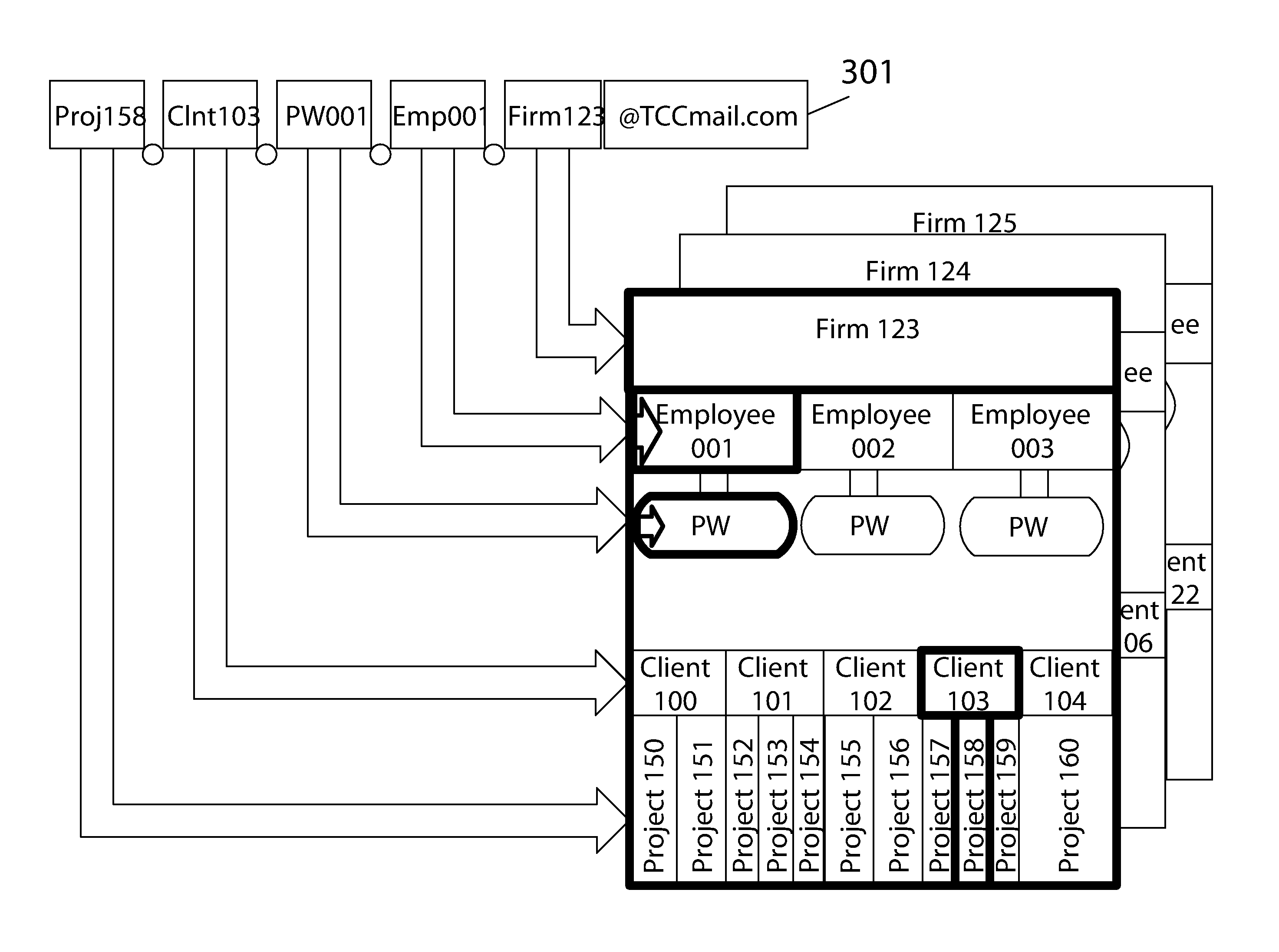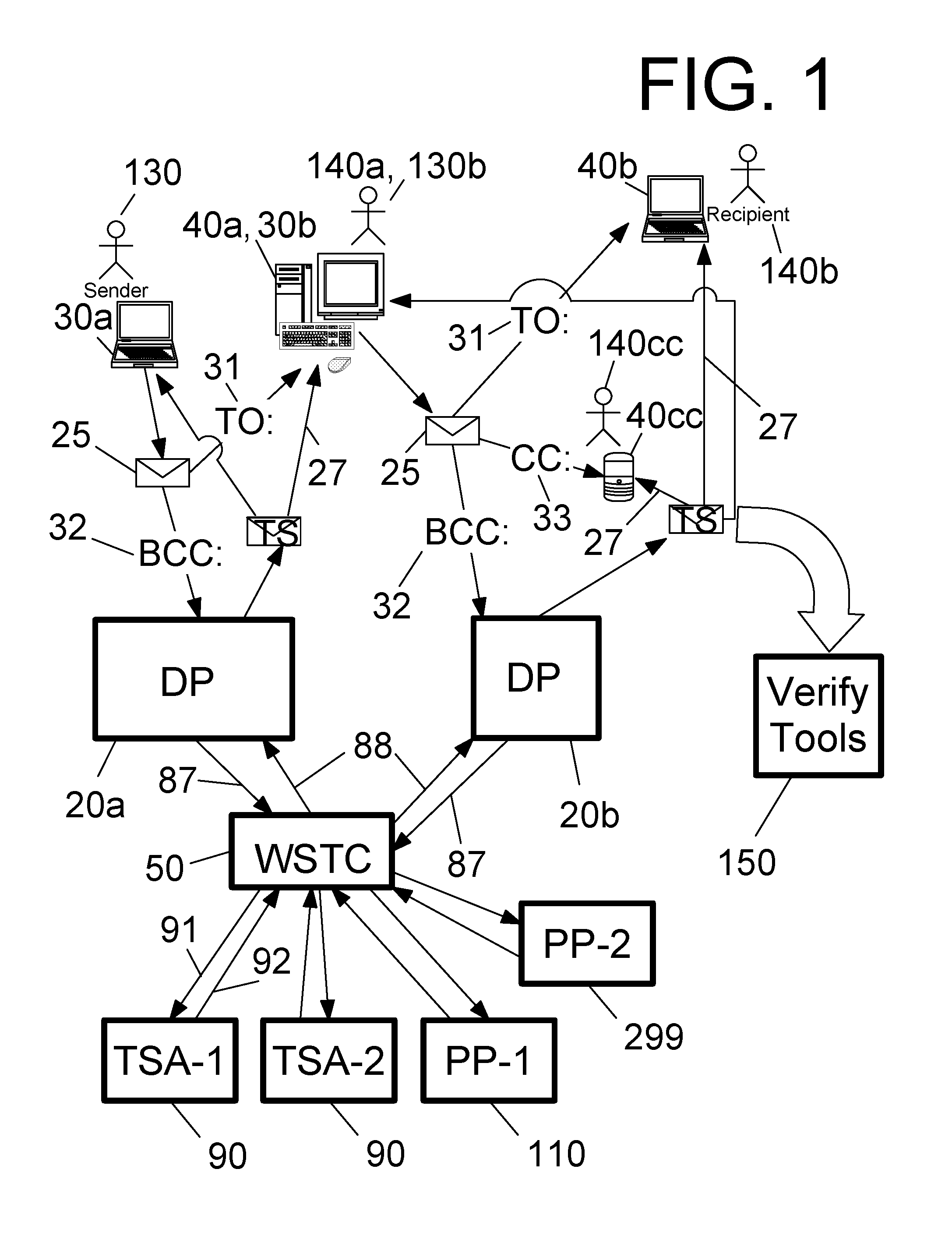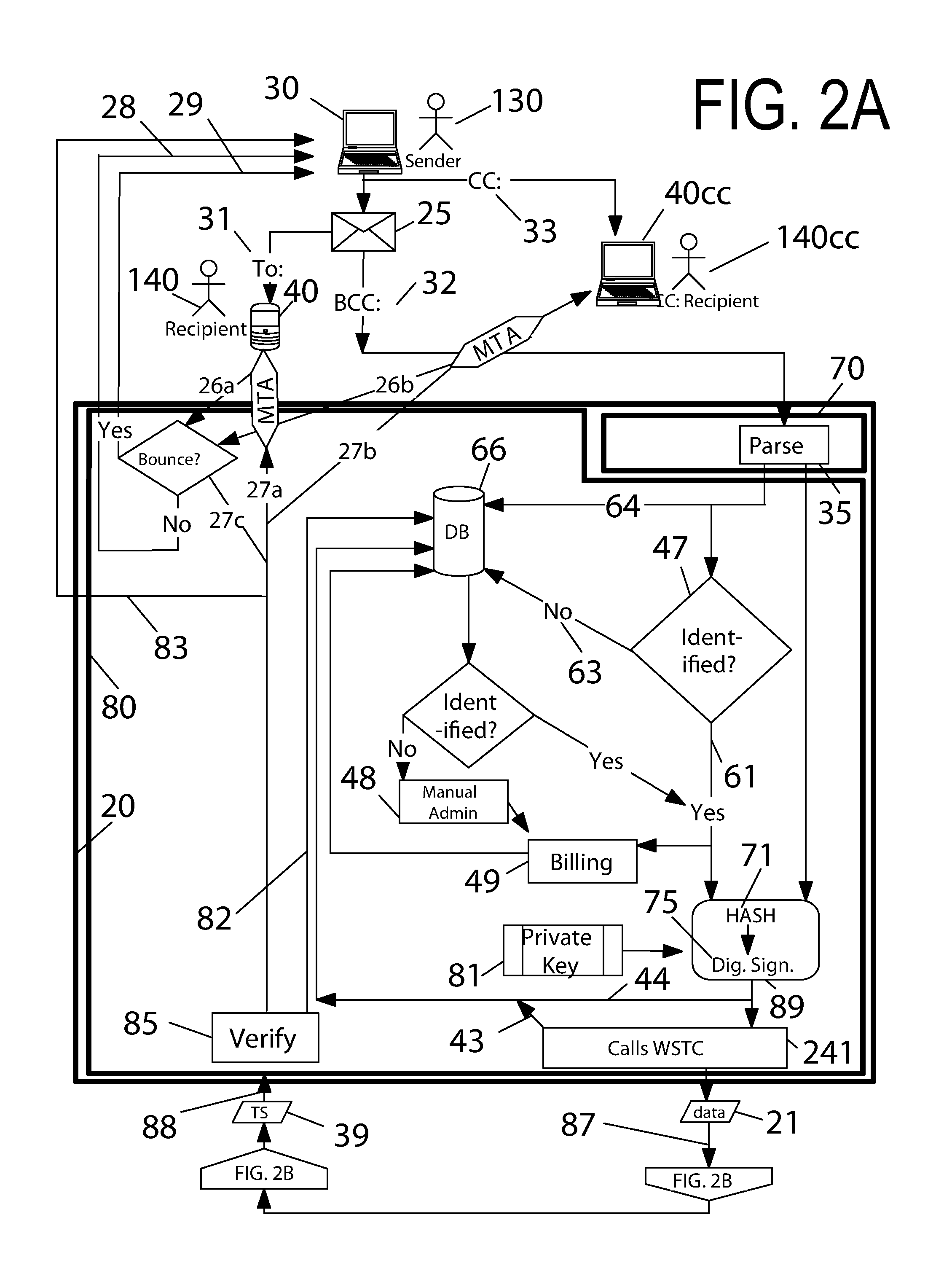However, paper mail is still used for official correspondence or when a document is delivered to meet a deadline, because paper mail has provided certain advantages that email has heretofore been unable to satisfactorily replicate.
Certified paper mail provides an official
record through the United States
Postal Service that a document was sent, but email systems which seek to provide a
verification of sending are cumbersome, typically requiring email to be sent through a web interface or requiring the installation of specialized
software or hardware, and wholly dependent upon the reliability of the system provider.
This is a significant drawback for any system which does not enjoy near universal usage, and it is a prohibitive obstacle when sending email to recipients who may not want to receive the email, such as would be the case with an emailed eviction notice or the like.
Past email and document certification systems have failed to provide any integrated project or
client tracking.
Their use would therefore require either a time-consuming manual effort to determine which email might be charged to which
client after they are sent, or a tedious process in which a notation of the related client or project would have to be made before each email sent.
Further, time-stamp
verification methods are currently cumbersome.
This is neither simple nor straightforward.
The Bisbee system provides only proof of existence and possession, and does not provide any means to determine the delivery of the document to any party or to determine the opportunity of any party to have knowledge of the contents of the document.
Since only the unique HASH is stored, this method provides no way for a document to be later retrieved or recreated from the
trusted third party should the original copy be lost.
Furthermore, this method at no point utilizes cryptographic signing to verify the original possessor or sender of the document.
This introduces a level of uncertainty as to the authenticity of the email, as well as significantly increasing the chance that the email will be filtered as spam, as the sending
email address will not be on any white
list utilized by the ultimate recipient, thus leading to a substantially increased likelihood of the email not being seen by the intended recipient.
Since the actual contents of the emails sent to the ultimate recipients are dependent on the
processing of the certification
server, there is no guarantee of what was actually sent to each ultimate recipient.
Likewise, Tomkow provides no facility for cryptographic signing, and requires that the certification provider be the provider of the time stamp.
Tomkow has even more severe drawbacks than Zabetian in relation to obfuscating the original sender of the email, with each email to an ultimate recipient coming from a unique
email address, so the ultimate user may not be able to set up any white
list more stringent than one which allows any email purporting to be from the domain of the certification
server.
This system has essentially the same drawback as the Tomkow system and the Zabetian system, in that the email to the ultimate recipient is not from the original sender, but is from the content verification
server, and that the time stamp information is obtained from and maintained by the content verification server with no facility to obtain a time stamp from a more trusted source.
This system has similar drawbacks to the Wakino, Tomkow, and Zabetian systems in that the time stamp is acquired from a
clock maintained by the remote server with no provision for integrating a more trusted entity.
The Botti system further provides no system to verify the delivery of emails.
This essentially precludes general use for sending certified emails to general users, who cannot be compelled to use mailboxes associated with a server capable of providing certification.
Also, service costs cannot be associated with a client of the system user.
All these systems rely on a local
clock, which is believed to be less secure than a clock maintained by a
trusted third party, and the replacement of the computer's local clock with a nonstandard-clock is both troublesome and likely to be error prone and is difficult to integrate with a standard business IT environment.
Furthermore, none of the systems provide for any way to verify the delivery of emails or to verify received time stamps.
It is therefore not useful for the desired purpose of verification of delivery to a potentially uncooperative recipient, besides the drawback of requiring significant effort for even a cooperative recipient.
The system therefore does not provide for time-
stamping documents or verification of delivery of emails.
This system does not provide any system for time-
stamping the document, nor a way to verify the delivery of email.
 Login to View More
Login to View More  Login to View More
Login to View More 


